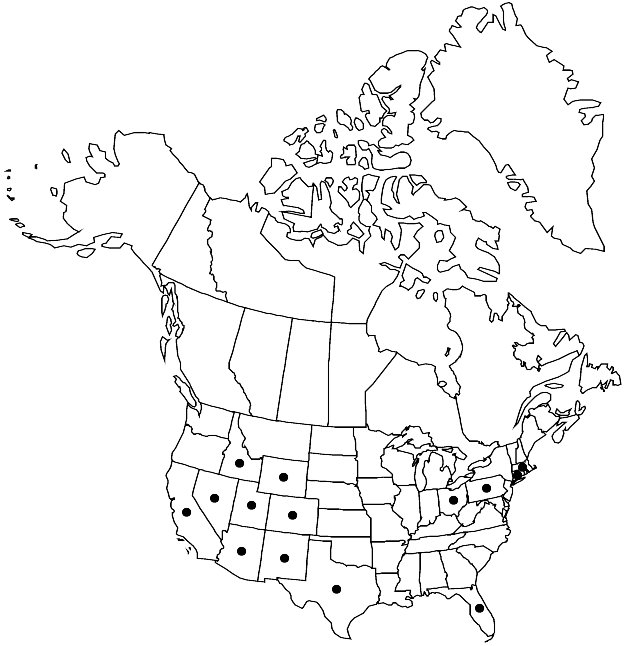Difference between revisions of "Sisymbrium irio"
Sp. Pl. 2: 659. 1753.
FNA>Volume Importer |
imported>Volume Importer |
||
| Line 6: | Line 6: | ||
|place=2: 659. 1753 | |place=2: 659. 1753 | ||
|year=1753 | |year=1753 | ||
| + | }} | ||
| + | |special_status={{Treatment/ID/Special_status | ||
| + | |code=W | ||
| + | |label=Weedy | ||
| + | }}{{Treatment/ID/Special_status | ||
| + | |code=I | ||
| + | |label=Introduced | ||
}} | }} | ||
|basionyms= | |basionyms= | ||
| Line 23: | Line 30: | ||
|elevation=0-1700 m | |elevation=0-1700 m | ||
|distribution=Ariz.;Calif.;Colo.;Conn.;Fla.;Idaho;Mass.;Mich.;Nev.;N.Mex.;Ohio;Pa.;Tex.;Utah;Wyo.;Europe;w;c Asia;n Africa;introduced also in South America;Australia. | |distribution=Ariz.;Calif.;Colo.;Conn.;Fla.;Idaho;Mass.;Mich.;Nev.;N.Mex.;Ohio;Pa.;Tex.;Utah;Wyo.;Europe;w;c Asia;n Africa;introduced also in South America;Australia. | ||
| + | |introduced=true | ||
|tables= | |tables= | ||
|references= | |references= | ||
| Line 45: | Line 53: | ||
|publication title=Sp. Pl. | |publication title=Sp. Pl. | ||
|publication year=1753 | |publication year=1753 | ||
| − | |special status= | + | |special status=Weedy;Introduced |
| − | |source xml=https:// | + | |source xml=https://bibilujan@bitbucket.org/aafc-mbb/fna-data-curation.git/src/bb6b7e3a7de7d3b7888a1ad48c7fd8f5c722d8d6/coarse_grained_fna_xml/V7/V7_1148.xml |
|tribe=Brassicaceae tribe Sisymbrieae | |tribe=Brassicaceae tribe Sisymbrieae | ||
|genus=Sisymbrium | |genus=Sisymbrium | ||
Revision as of 00:52, 28 May 2020
Annuals; glabrous or sparsely pubescent. Stems erect, branched proximally and distally, (1–)2–6(–7.5) dm, glabrous or sparsely pubescent at least basally. Basal leaves not rosulate; petiole (0.5–)1–4.5(–6) cm; blade oblanceolate or oblong (in outline), (1.5–)3–12(–15) cm × (5–)10–60(–90) mm, margins runcinate to pinnatisect; lobes (1–)2–6(–8) on each side, oblong or lanceolate, smaller than terminal lobe, margins entire, dentate, or lobed. Cauline leaves similar to basal; (distalmost) blade (smaller, to 2 cm wide), margins entire or 1–3-lobed. Fruiting pedicels divaricate or ascending, slender, much narrower than fruit, (5–)7–12(–20) mm. Flowers: sepals erect, oblong, 2–2.5 × 1–1.5 mm; petals oblong-oblanceolate, 2.5–3.5(–4) × 1–1.5 mm, claw 1–1.5 mm; filaments 2.5–4 mm; anthers ovate, 0.5–0.9 mm. Fruits (divaricate to ascending, young fruits overtopping flowers), narrowly linear, straight or slightly curved inward, slightly torulose, slender, (2.5–)3–4(–5) cm × 0.9–1.1 mm; valves glabrous; ovules 40–90 per ovary; style 0.2–0.5 mm; stigma prominently 2-lobed. Seeds 0.8–1 × 0.5–0.6 mm. 2n = 14.
Phenology: Flowering Dec–May.
Habitat: Rocky slopes, orchards, roadsides, fields, pastures, waste grounds, prairies, disturbed sites
Elevation: 0-1700 m
Distribution

Introduced; Ariz., Calif., Colo., Conn., Fla., Idaho, Mass., Mich., Nev., N.Mex., Ohio, Pa., Tex., Utah, Wyo., Europe, w, c Asia, n Africa, introduced also in South America, Australia.
Discussion
Selected References
None.